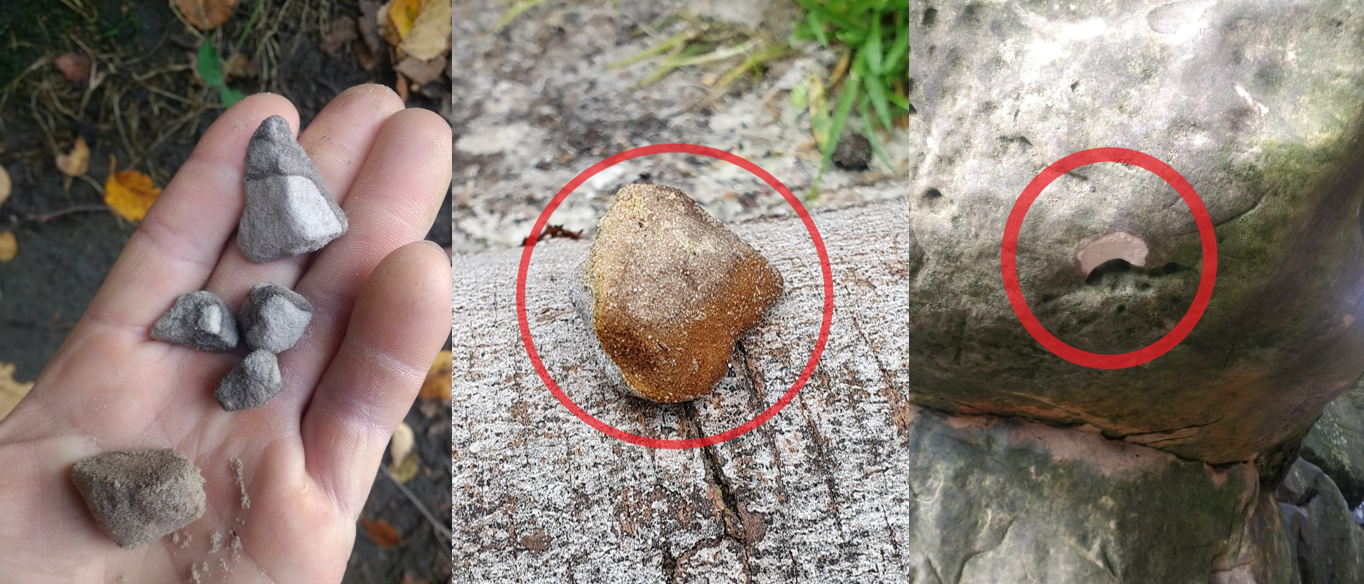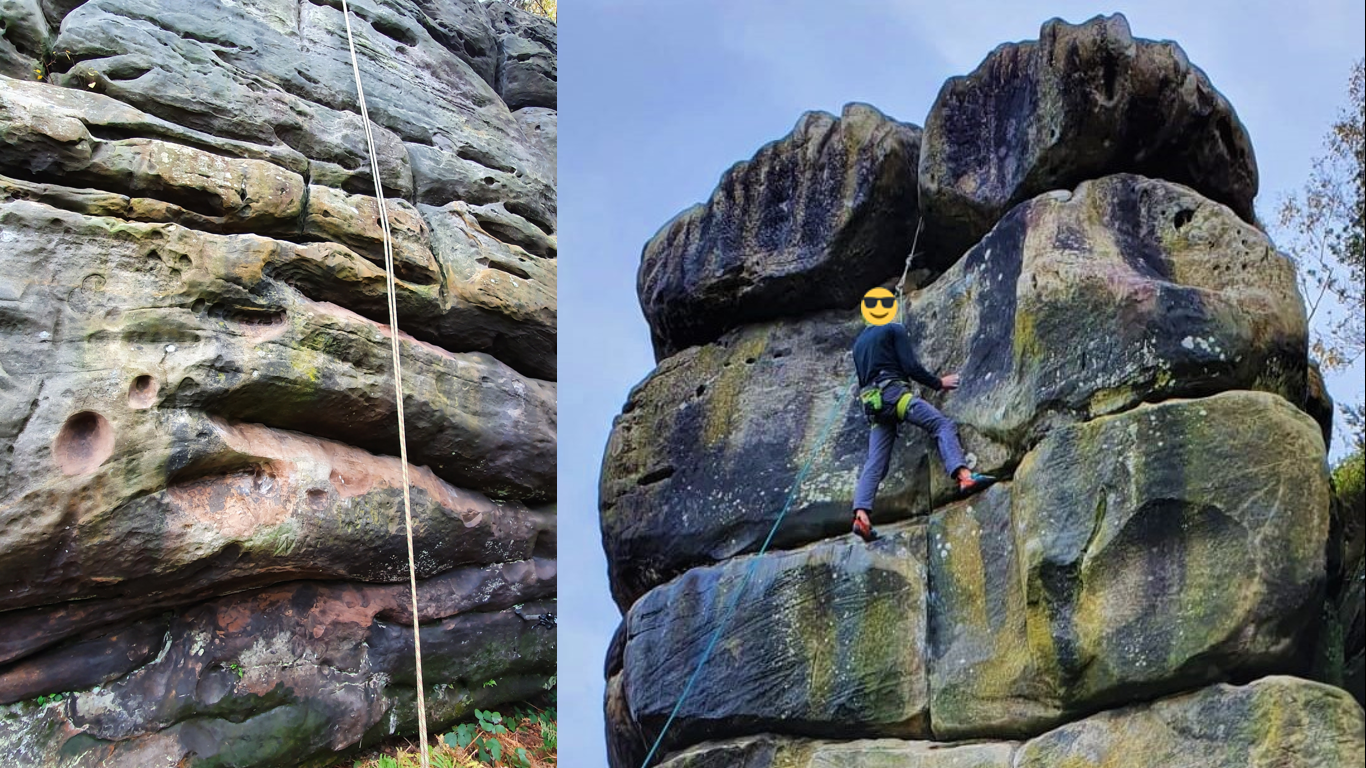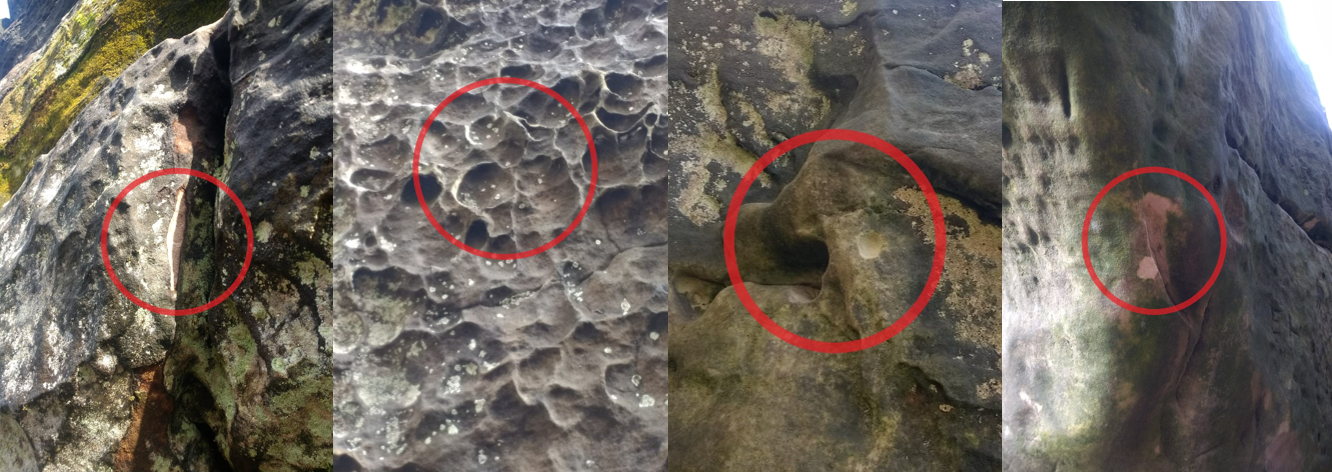We’re asking all climbers not to climb on the Southern Sandstone crags during Lockdown to help us prevent irreversible damage to the rock. The BMC Access team report.
With Lockdown 2 causing indoor walls to close, many climbers have been heading to the Southern Sandstone crags. However, large numbers visited these outcrops last weekend to climb when the rock was still damp and the resulting damage to this very special and finite resource is sobering.

Broken holds at Harrison's Rocks from last weekend. Left and right: snapped holds from the North Boulder, centre: a crucial hold snapped from the classic route Niblick.
Now, the BMC is calling on all climbers not to climb in the area in the short term whilst the weather is bad and rock damp to prevent further irreparable damage.
Southern sandstone is an extremely fragile rock type when dry, but when wet or damp it is weakened to the point where climbing on it is unjustifiable.
Normally, our Sandstone Code of Practice calls for climbers to exercise their own judgement and not climb on wet or damp rock. However, given the number of snapped holds on classic routes at the weekend, it’s clear in the current circumstances relying on the judgement of individuals isn’t working. If nothing is done, we risk further widespread and irreversible damage to many routes and problems on these crags.

Ropes set on routes that are still wet - Rift (left) and Niblick (right).
We’ve got a very unusual ask of all London and South East climbers for the coming months: please don't climb on the Southern Sandstone crags for the time being. As late autumn and winter kick in, there is unlikely to be a stretch of good weather long enough to dry anything other than very small parts of some crags.
These tiny dry areas can’t accommodate the high numbers of climbers visiting and will be damaged from sheer numbers in a sort space of time. Alongside this the temptation will be strong to spill out onto empty but damp parts of the crag and if this happens further damage will certainly be the result.

Examples of broken and damaged holds at Harrison's Rocks from last weekend. Routes affected (from left to right) are: Orangutang, Phillipa, and two different problems on the North Boulder.
We appreciate that this is a very difficult time for everyone and we don’t make this plea lightly. We know with indoor walls closed and us asking you to avoid the crags, that unless you’re one of the lucky few with a home woody, climbing is off the cards until December. We know how hard that is to stomach.
However, if climbing continues like last weekend, irreparable damage will be done to more routes and problems. Once holds are snapped off, they can’t be replaced. We’ve already seen heart breaking damage to some of the area’s most classic routes – let’s make sure what is left is looked after so this amazing resource is still there to climb on after the winter.
Now is a great time to focus instead on home training and getting strong ready for when the weather improves and climbing on dry rock is possible again. Don't forget too that there are a number of outdoor artificial boulders in parks around London and the South East that could provide a much needed fix if you live nearby.
Q&A TUNE IN LIVE: Set a reminder 📺
BMC Southern Sandstone Access Rep Adrian Paisey will be live answering your questions about the Southern Sandstone situation Thursday 12th November 13.30
Southern Sandstone Access Rep Adrian Paisey will be explaining the special lockdown situation over at the Sandstone...
Posted by BMC on Tuesday, 10 November 2020
DOWNLOAD: the BMC RAD app
Get all the info on crags with the RAD (Regional Access Database) app from the BMC! Available now for Android and iOS, it's free and comes with a host of new features like navigation and parking, weather and tidal updates, and of course information on restrictions or notes on access advice. Get it here now!
RAD is community led and your comments help keep it up to date so don’t be afraid to add any relevant information after a crag visit which might be useful for other visitors – anything from conditions on the crag, favourite routes or reports of rockfall/other recent changes to the crag are all useful for other climbers visiting.
« Back